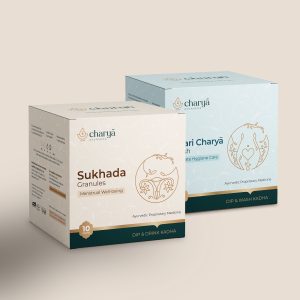Your cart is currently empty!
Fasting the Ayurvedic Way: Wellness Insights and Benefits.

What if keeping your digestive system healthy was all about what you eat, and giving it a break from your regular eating pattern? That’s the idea of fasting.
Despite its recent surge in popularity, fasting is nothing new. It is a practice that dates back several centuries and is discussed in Ayurveda scriptures. Let’s delve into the article “How to Fast the Ayurvedic Way,” we’ll explore not only the ancient roots of fasting but also its modern resurgence and the numerous benefits of fasting for your health and well-being.
Introduction to Ayurvedic Fasting
According to Ayurveda, fasting does not mean starving ourselves, rather it is about the intake of light and appropriate foods for the body and mind.
Upavasa (Ayurveda fasting) encourages the digestive fire and destructs the metabolic toxins (ama dosha) from the body. In the Ayurveda concept, the accumulated ama dosha (set of toxins) is a major trigger for numerous diseases. Thus, when fasting destroys this toxin, it fosters improved health. Moreover, during fasting, you feel the lightness and easiness in your body and mind. It also makes your body feel energised.
The Essence of Ayurvedic Fasting
In Ayurveda, fasting, Upavasa or Pratyahara are interchangeable terms for each other.
Pratyahara is derived from two Sanskrit words: “prati,” means against, and “ahara,” means consume by the body. While practising pratyahara or Ayurveda fasting, it is vital to choose what to take into the body, it can be eatable items and thoughts.
There are many benefits of fasting, with Upavasa (Ayurveda fasting) being Daivavyapashraya therapy (spiritual therapy) and one of the parts of Langhana therapy readily used by Ayurveda scholars for many years.
Upavasa is used as a treatment therapy for various diseases like vomiting, diarrhoea, bowel disorder, or fever.

The word Langhan is used majorly to indicate the Upavasa (fasting). It is believed that the procedure which makes the body light is termed Langhana.
Difference between fasting and cleansing in Ayurveda
In Ayurveda, Fasting and cleansing are different. Fasting is for a short duration which helps to get rid of toxins in the body and gives time to heal the body on its own. Fasting also helps cultivate control over the senses and mind.
On the other hand, cleansing is a long procedure and includes several cleansing procedures. It can be done by medicines, Panchakarma therapies, or a special diet.
Benefits of Ayurveda fasting
Fasting is a good hygiene practice backed by Ayurveda science, since ancient times. This helps the body to give the required rest and to work appropriately.
In Ashtanga Hridiyam Chapter 14, Shloka 16-17, the benefits of fasting is mentioned as:

There are various advantages of Ayurvedic fasting, such as:
- Resting the digestive organs to free up energy for healing
- Improving Agni, detoxification, and enhancing the immune system
- Enhanced mental clarity and spiritual growth
- Provides the necessary nourishment needed for the body to heal itself
- Gives a natural glow to the body
- Increased overall energy of the body
- Revitalizes the body
- Cleanses the excess mucus and food waste from the body
- Reboots the body
- Improves a sleep cycle
- Maintains a healthy body weight
Tips for fasting according to Ayurveda
- Eat mindfully
- Do not indulge in excessive eating before and after fasting
- If you are weak, elderly, or pregnant, practice fasting only after the Ayurveda doctor’s guidance
- Post-fasting, always eat light and freshly prepared food.
- Avoid strenuous exercise during fasting

Diet in fasting
During fasting, Ayurveda doctors prescribe a specific regime for each person after accessing prakriti, agni, and strength. Specific seasonal fruits, vegetables, whole grains, medicate water, and infused herbal teas, are included during fasting.
For each specific dosha, the specific diet indicated is:
Vata Dosha- Eat light foods like khichari, drink a ginger-infused decoction, or herbal tea, and eat fresh yet warm foods. Also, Vata individuals can fast once a month.
Pitta Dosha- Consumes a liquid diet like vegetable broths, soups, or lightly cooked vegetables or pulses. Eat a proper amount of food, don’t compromise on quantity or skip a meal. Pitta individuals can fast once a month while including cooling pitta-pacifying foods.
Kapha Dosha- Consume warm vegetable broths. Also, eat seasonal fruits and drink their juices, but avoid sweet and sour food items. Kapha individuals can fast once a week.
Foods like Moong soup, lentil soup, thin rice gruel seasoned with dry ginger, long pepper, and semi-solid moong dal Khichadi can be consumed after upavas or langhan. These foods are given importance in Ayurveda, as it is nourishing and easy to digest, promote digestion, kindle digestive fire, reduce aam accumulation and help cleanse the body.
Conclusion
Ayurvedic fasting comes a long way, it does not mean to deprive yourself of food or water completely, instead, it means taking a subtle break from your regular eating pattern. While doing so, you can help your agni (digestive fire) to take a rest, so it can work efficiently.
FAQs
Q1 How to break a fast ayurveda?
Ans- To break a fast, it’s important to eat light and freshly cooked meals. Also, one can prepare a semi-liquid dish of cooked rice, cereals, or pulses.
Q2 What is intermittent fasting for pitta dosha?
Ans- Individuals with pitta dosha should not practice intermittent fasting for so long as it can disable the fire and heat elements. Thus, a shorter and milder fasting period of 10-12 hrs is suitable for pitta dosha.
Q3- What is Ayurveda intermittent fasting?
Ans- Ayurveda intermittent fasting focuses on listening to the body first. If one can’t follow the longer period of intermittent fasting and feels tired, then Ayurveda recommends breaking the fasting window and reducing the span.
Q4- What is intermittent fasting for vata dosha?
Ans- For Vata dosha, the intermittent fasting window is much shorter, and they are advised to opt for mono-diet fasting with kitchari. It will provide nourishment as well as cleanse the body.
Q5- How to fast easily in an Ayurveda way?
Ans- Fasting in an Ayurveda way is much easier than we thought, it is much more than starvation, but it’s eating a proper yet light diet.
Q6- What does Ekadashi fasting in Ayurveda depict?
Ans- Ekadashi fasting is done on the 11th day of the Lunar cycle. In Ayurveda, it is believed that what one eats will affect the body in 3 or 4 days, thus, fasting on Ekadashi, prepares the body for the shift in the lunar cycle. This helps in preventing the disease and to maintain health.

Recommended Products
More from Charya

5 Ayurvedic Brightening Herbs For Glowing Skin
Vd. Shweta Labde

Know Your Charyā- Your Ayurvedic Wellness Code
Shweta Labde

Hemant Ritucharya- An Ayurvedic Guide To Holistic Winter Routine
Vd. Shweta Labde










Leave a Comment